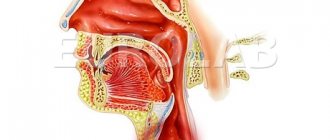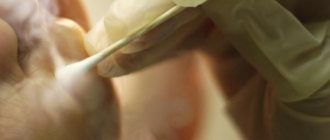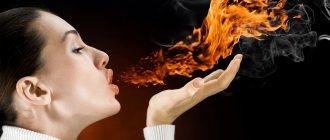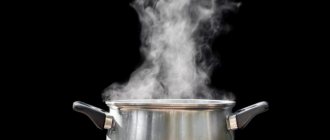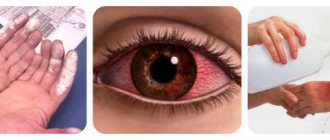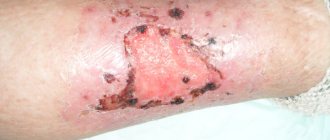The problem of chemical burns affects every person. We come across chemicals everywhere: while cleaning our apartment, at work, at university, and even in beauty salons. But if you do not adhere to safety precautions when working with chemicals, serious problems arise. Chemicals are able to quickly and deeply penetrate epithelial cells, destroy them and lead to necrosis. The most difficult cases are burns that occur due to an accident at a chemical plant, where, despite multi-level protection, people directly come into contact with large quantities of chemical reagents.
The skin of the hands, feet, face, mucous membranes of the eyes, mouth and esophagus are favorite targets for chemical burns. Sometimes the nasal mucosa also suffers when inhaling chemical fumes. If the affected area is small, then, in general, you can cope on your own. But do not forget that some chemicals are incredibly active and can cause great harm.
The size and extent of the lesion depends directly on:
- Degree of concentration of the substance;
- Its quantity, strength and mechanism of action on tissue;
- Duration of exposure;
- Affected organ;
- The route by which the substance entered the body (inhalation, direct contact, ingestion).
Peculiarities
Most often, burns from acids and alkalis occur in industrial work conditions or in the household. Injury received at home, as a rule, does not cause serious harm to health due to lower concentrations of reagents. Being injured in the workplace often has serious consequences, including death. Since high concentrations of toxic components are used in production, they cause severe burns upon contact. The use of such substances requires increased attention and compliance with safety precautions.
Signs of injury
In case of a chemical burn with alkali, a feeling of soap deposits immediately appears at the site of the injury. This is due to the emulsification of sebum on the surface of the epidermis. Redness and irritation of the skin exposed to the chemical occurs almost instantly.
The longer the effect of the reagent on the skin, the more pronounced the symptoms of the burn. Swelling, burning sensation, numbness and sharp pain appear. It is worth noting that alkali can diffuse into tissues; as a result, the pathological process occurs in the subcutaneous layers and damage is not immediately detected on the surface.
Damage Level
The severity of the burn you receive depends on the following factors:
- composition, volume and concentration of alkali;
- duration of contact.
Alkali damage is divided as follows:
- I degree. Only the top layer of skin is injured. Symptoms of a first-degree alkali burn include: mild swelling, redness, burning, and moderate pain.
- II degree. Small blisters with watery contents form on the skin. The burn affects the deeper layers of the dermis, otherwise the symptoms are similar to the previous ones.
- III degree. Very often the subcutaneous fat layer is injured. The active substance penetrates into the deeper layers, which is why the pain is felt more acutely. Large watery blisters appear on the surface of the dermis, less often with bloody spots.
- IV degree. The most dangerous type of alkali burn. It affects not only the skin, but also muscles, tendons, bone and fat tissue. This degree of injury poses a great threat to the life and health of the victim. Treatment is done through surgery to remove dead tissue and a chemical.
Local symptoms
Superficial burns up to 10-12% and deep burns up to 5-6% occur predominantly in the form of a local process. There is no disruption of the activity of other organs and systems. In children, the elderly and people with severe concomitant diseases, the “borderline” between local suffering and the general process can be reduced by half: to 5-6% for superficial burns and up to 3% for deep burns.
Local pathological changes are determined by the degree of the burn, the period of time since the injury, secondary infection and some other conditions. First degree burns are accompanied by the development of erythema (redness). Second degree burns are characterized by vesicles (small blisters), while third degree burns are characterized by bullae (large blisters with a tendency to merge). When the skin peels off, spontaneously opens or removes the blister, erosion (bright red bleeding surface, devoid of the superficial layer of skin) is exposed.
With deep burns, an area of dry or wet necrosis forms. Dry necrosis is more favorable and looks like a black or brown crust. Wet necrosis develops when there is a large amount of moisture in the tissues, large areas and a large depth of the lesion. It is a favorable environment for bacteria and often spreads to healthy tissue. After rejection of areas of dry and wet necrosis, ulcers of varying depths are formed.
Burn healing occurs in several stages:
- Stage I. Inflammation, cleansing the wound from dead tissue. 1-10 days after injury.
- Stage II. Regeneration, filling the wound with granulation tissue. It consists of two substages: 10-17 days - cleansing the wound of necrotic tissue, 15-21 days - development of granulations.
- Stage III. Scar formation, wound closure.
In severe cases, complications may develop: purulent cellulite, lymphadenitis, abscesses and gangrene of the extremities.
First aid
Proper and prompt treatment after a skin burn with alkali significantly reduces the risk of developing negative consequences. You must immediately remove clothing from the area where the substance came into contact. The reagent must then be removed. The injured area is washed with water and its reaction is neutralized with acid. At home, this can be done with vinegar or lemon.
It is important to note several features of skin cleansing:
- Rinse the affected area for 15-30 minutes.
- If the reagent was in powder form, you must first remove any remaining chemical from the skin and only then proceed with rinsing.
- It is strictly forbidden to clean with wet wipes or towels. This promotes accelerated penetration of the substance under the skin.
- If the burn was caused by quicklime, rinsing with water is strictly prohibited. This enhances the reaction of the chemical.
- If the injury is caused by contact with slaked lime, standard washing is carried out, followed by treatment using a sugar solution (1 tablespoon per glass of water).
To dull the pain, you can apply a cold compress to the wound. If blisters are present, it is recommended to consult a specialist for appropriate treatment.
What not to do
When providing emergency assistance, you need to be sure that your actions are correct.
Burn disease develops when more than 10% of the body surface is affected in adults, 5% in children under 5 years of age, 3% in weakened patients with concomitant diseases.
To prevent complications, it is prohibited:
- wash wounds with running water;
- puncture blisters;
- treat injured areas with oil or alcohol;
- use anti-burn ointments and sprays.
A fourth degree burn is accompanied by charring of deep layers of skin and even bones. Do not remove stuck clothing from the wound. Such actions will only increase the risk of infectious tissue inflammation.
Damage to the organs of vision
Rarely, but still there are cases of eye burns from alkali. In this situation, it is urgent to call an ambulance. This type of lesion has the following features:
- lacrimation;
- acute reaction to light;
- pain in the eye;
- not only the eyeball is affected, but also the area around it;
- in severe cases, complete or partial loss of vision is possible.
While waiting for emergency help, the mucous membrane of the eye should be thoroughly rinsed:
- The eyelid of the injured eye is pulled back and carefully washed with a thin stream of cool water for 20 minutes.
- The patient is taken to a specialist.
Rehabilitation
Rehabilitation includes measures to restore the patient’s physical (therapeutic gymnastics, physiotherapy) and psychological state. Basic principles of rehabilitation:
- early onset;
- clear plan;
- eliminating periods of prolonged immobility;
- constant increase in physical activity.
At the end of the primary rehabilitation period, the need for additional psychological and surgical assistance is determined.
Treatment of chemical damage, drugs
Depending on the size of the chemical burn with alkali, the severity and location of the injury, drug treatment is prescribed. It consists of a combination of the following drugs and procedures:
- For acute pain, painkillers are used. Among them: “Ibuprofen”, “Nise”, “Nurofen”, “Analgin”, “Ketorolac”.
- To prevent infection of the wound and its possible suppuration, antibacterial procedures are carried out using a solution of “Novoimanin” in a ratio of 1 to 5 or “Dioxyzol”.
- The following water-soluble ointments are applied to the affected area of the skin: Levomekol, Levomisil.
- In cases of II and III degrees of damage, the doctor, using antiseptic drugs, opens the blisters and treats the site of injury.
- For IV degree burns, surgical intervention is performed to eliminate necrosis. Plastic surgery is often used to correct defects aesthetically.
Folk remedies
When resorting to help with alkali burns using alternative medicine methods, it is recommended to abandon recipes that do not involve heat treatment of plants, since in this case the risk of infection in the wound increases.
You can use the following recipes:
- A strong decoction based on bay leaves effectively relieves the inflammatory process. It is enough to pour 5-7 medium leaves with a glass of boiling water and treat the area with infusion after cooling.
- It is useful to treat purulent wounds with freshly squeezed aloe juice. A gauze swab is soaked in it and applied to the lesion.
- Celandine juice promotes rapid drying of an open wound. It is diluted with boiled water at room temperature in proportions of 1 to 1.
- Essential oils help reduce inflammation, including eucalyptus, cedar and tea tree.
- You can speed up healing by using lotions on wounds. They are made from golden mustache leaves, mumiyo and propolis.
- Washing with a herbal decoction is useful (recipe below).
The decoction is prepared as follows:
- A herbal mixture is prepared from several medicinal plants, such as St. John's wort, cinquefoil, plantain, celandine, and calendula.
- Add 2 tsp per glass of water. herbal mixture and simmer over low heat for 10 minutes.
- Let it sit for 3 hours and treat the wound every time you change the dressing.
Diagnostics
First of all, assessing a burn involves examining the affected area; the larger its area, the more serious the problem. As a rule, the severity is determined on the third day after injury.
For most patients, the diagnosis of alkali burn is associated with damage to the outer skin. The doctor is aware of the likely severity of the injury and its consequences. He tries to prevent all possible complications, such as wound infection, sepsis, intoxication, etc. In case of existing pathologies, a specialist will help to take timely measures and prescribe treatment. Because the chemical tends to penetrate tissue, this type of burn is considered severe.
Some types of alkali, in addition to external influences, penetrate into the blood and increase the natural pH level, which leads to the development of pathological processes in the heart and kidneys. If we talk about eye burns, diagnosis is carried out using special tools and equipment, after which the ophthalmologist prescribes therapy.
General symptoms
Extensive lesions cause burn disease - pathological changes in various organs and systems, in which protein and water-salt metabolism is disrupted, toxins accumulate, the body's defenses are reduced, and burn exhaustion develops. Burn disease, combined with a sharp decrease in motor activity, can cause dysfunction of the respiratory, cardiovascular, urinary system and gastrointestinal tract.
Burn disease occurs in stages:
Stage I. Burn shock. Develops due to severe pain and significant loss of fluid through the surface of the burn. Represents a danger to the patient's life. Lasts 12-48 hours, in some cases – up to 72 hours. A short period of excitement is replaced by increasing retardation. Characterized by thirst, muscle tremors, chills. Consciousness is confused. Unlike other types of shock, blood pressure rises or remains within normal limits. The pulse quickens and urine output decreases. The urine becomes brown, black or dark cherry, and has a burning smell. In severe cases, loss of consciousness is possible. Adequate treatment of burn shock is possible only in specialized medical care. institution.
Stage II. Burn toxemia. Occurs when tissue breakdown products and bacterial toxins are absorbed into the blood. Develops within 2-4 days from the moment of injury. Lasts from 2-4 to 10-15 days. Body temperature is increased. The patient is excited, his consciousness is confused. Convulsions, delirium, auditory and visual hallucinations are possible. At this stage, complications from various organs and systems appear.
From the cardiovascular system - toxic myocarditis, thrombosis, pericarditis. From the gastrointestinal tract - stress erosions and ulcers (may be complicated by gastric bleeding), dynamic intestinal obstruction, toxic hepatitis, pancreatitis. From the respiratory system - pulmonary edema, exudative pleurisy, pneumonia, bronchitis. From the kidneys – pyelitis, nephritis.
Stage III. Septicotoxemia. It is caused by a large loss of protein through the wound surface and the body’s response to infection. Lasts from several weeks to several months. Wounds with a large amount of purulent discharge. Healing of burns stops, areas of epithelialization decrease or disappear.
First aid
First aid for alkali burns:
- Urgently wash the affected area with running cold water for 20 minutes.
- Then the injured area is treated with an acidified solution. It is prepared as follows: dissolve 0.5 tsp in a glass of water. boric or citric acid or stir 1 tbsp. l. 6 percent vinegar with 3 tbsp. l. water.
In case of a burn with a powdered alkali composition, it is cleaned from the skin with a dry paper or cloth towel and only then washed with water and treated with an acidified solution. The substance reacts with water, so it is important to remove it thoroughly before rinsing to avoid causing further harm.
If a burn is caused by contact with quicklime, do not wash it. The reagent is removed from the skin with a dry cloth and treated with vegetable oil, then a bandage is applied.
First aid for a burn with slaked lime consists of thoroughly washing the affected area and treating it with sweetened water. You can also make lotions with it.
A burn to the organs of vision is one of the most severe types of injuries. After washing the eyes with water, treat them with a weak acidified solution, and then immediately seek help from an ophthalmologist.
How to determine the area of the burn surface
To determine the extent of burned tissue, the rule of nine is used. In accordance with it, certain zones occupy an area that is a multiple of 9% of the entire body surface:
- belly – 9%;
- neck and head area – 9%;
- chest – 9%;
- one hand – 9%;
- lower leg with foot – 9%;
- posterior surface of the body – 18%;
- outer and inner thigh – 9%;
- perineum and genitals – 1%.
For burns of 3B and 4 degrees, the extent of damage is determined by the rule of the palm - the area of its inner side approximately corresponds to 1% of the surface of the burnt person’s body.
Assistance for burns caused by acids and alkalis in a hospital
Mild forms of damage are treated with the well-known drug “Panthenol” in the form of an aerosol, spray “Oxycyclosol”, corticosteroid “Prednisolone”, local antiseptics “Dioxyzol” or “Novoimanin”. Let's describe the drugs in more detail.
- "Panthenol" - relieves inflammation, restores tissue and cell function, and is quickly absorbed.
- "Oxycyclosol" - has an antibacterial, antiallergic effect. It is used to treat small lesions (up to 20 cm2).
- Prednisolone is an antiexudative and antipruritic agent.
- "Dioxyzol" contains the antimicrobial component dioxidin and lidocaine, which reduces sensitivity. The drug is effective in fighting infection, stimulates the regeneration process, and is used once a day. Treatment with the medicine is accompanied by a slight burning sensation; long-term use is not recommended as it causes side effects. Before use, you must read the instructions for any contraindications.
- "Novoimanin" is a 1% alcohol extract of St. John's wort. Effective against pustular wounds, quickly relieves inflammation. Before use, the drug is diluted with water in a ratio of 5 to 1.
Prevention, prognosis
For preventive purposes, when working with alkalis, it is important to follow safety precautions, protect your hands with gloves, your eyes with special glasses, and your body with closed clothing.
The prognosis for rehabilitation mainly depends on the degree of the burn. Mild lesions usually heal fairly quickly with proper treatment. Severe alkali burns require longer therapy. Scars and pigment spots remain on the body, and joint mobility in the affected areas may be limited.
The article discusses the types of alkali lesions and describes the degrees of severity. Also described are actions to provide first aid to the victim, medications for treatment, traditional methods and recipes.
Forecast
The prognosis depends on the depth and area of the burns, the general condition of the body, the presence of concomitant injuries and diseases. To determine the prognosis, the lesion severity index (ISI) and the rule of hundreds (RS) are used.
Lesion severity index
Applicable in all age groups. With ITP, 1% of a superficial burn is equal to 1 unit of severity, 1% of a deep burn is 3 units. Inhalation lesions without respiratory dysfunction - 15 units, with respiratory dysfunction - 30 units.
Forecast:
- favorable – less than 30 units;
- relatively favorable – from 30 to 60 units;
- doubtful – from 61 to 90 units;
- unfavorable – 91 or more units.
In the presence of combined lesions and severe concomitant diseases, the prognosis worsens by 1-2 degrees.
Hundred Rule
Usually used for patients over 50 years of age. Calculation formula: sum of age in years + area of burns in percentage. A burn to the upper respiratory tract is equivalent to 20% skin damage.
Forecast:
- favorable – less than 60;
- relatively favorable – 61-80;
- doubtful – 81-100;
- unfavorable – more than 100.
